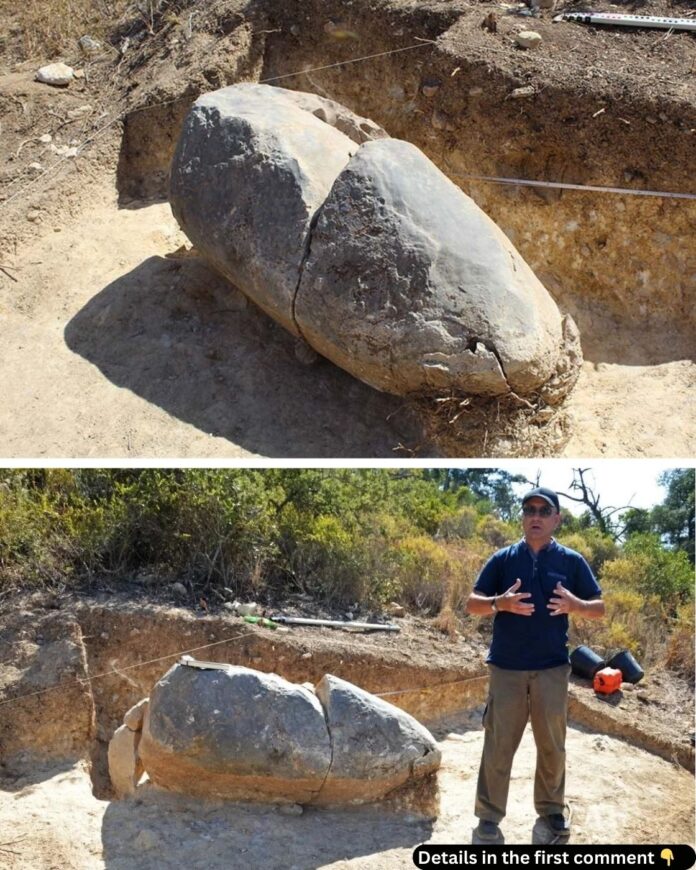The discovery of a 5,500-year-old menhir on Monte do Trigo in São Brás de Alportel, Algarve, Portugal, has opened a fascinating window into Europe’s Neolithic past. Unearthed by a local resident in 2021, this ancient stone monument offers valuable insights into the lives, beliefs, and agricultural practices of early human societies. As the first Neolithic monument found in the eastern Algarve, it holds regional significance, connecting modern-day inhabitants with the spiritual and cultural heritage of their ancestors.
The Discovery and Excavation
Historical Background of São Brás de Alportel
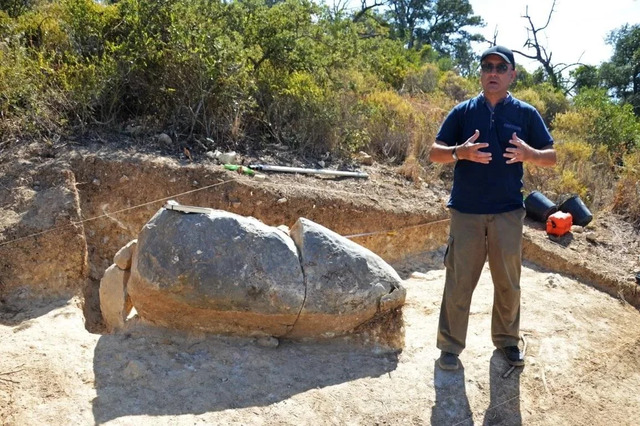
Archaeological interest in São Brás de Alportel dates back to the 19th century when Estácio da Veiga conducted initial studies in the area. His pioneering work marked the beginning of modern archaeology in the Algarve. Despite these early efforts, the region remained relatively unexplored until 2021, when a resident stumbled upon what appeared to be a menhir while searching for fossils. This prompted a new wave of excavations, led by archaeologist António Faustino Carvalho, in collaboration with the Regional Directorate of Culture of the Algarve, the University of the Algarve (UAlg), and the local municipality.
Details of the Excavation
The fieldwork, which began in August 2021, revealed not just the menhir but also fragments of other potential monuments in the area. The main menhir, partially buried and protected by soil for millennia, is crafted from limestone and closely resembles similar Neolithic structures found in western Algarve. However, its discovery in the eastern Algarve makes it unique and expands the known geographic range of such monuments in Portugal.
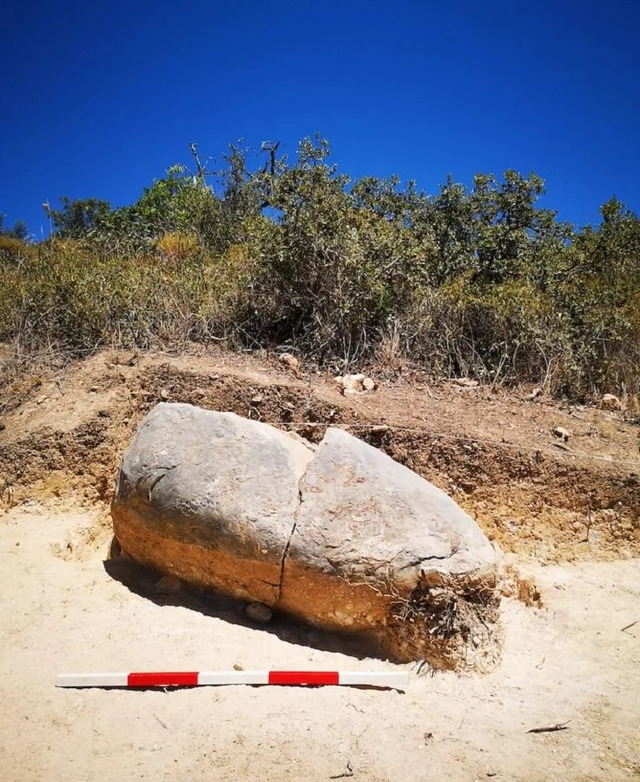
Researchers noted that the surrounding fragments were in poor condition, reduced to small pieces. These remnants, combined with the main menhir, suggest the possibility of a larger ceremonial site, potentially a cromlech or an alignment of stones. However, further studies are needed to confirm this hypothesis.
Video
Uncover the secrets of Portugal’s 7,000-year-old cromlech – watch the BBC REEL video to dive into this ancient mystery and its historical significance!
Understanding the Menhir
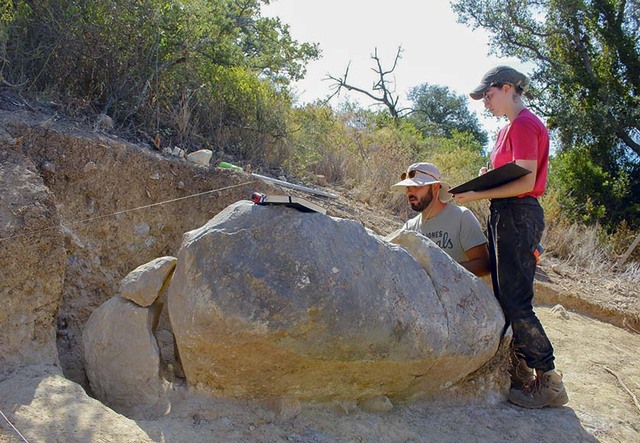
The menhir is a polished, vertically-oriented stone monument, a hallmark of Neolithic engineering. These structures, often meticulously shaped and buffed to resemble phallic forms, symbolized fertility and were integral to early human spiritual practices. The São Brás menhir shares similarities with other Neolithic monuments in the Algarve but stands out due to its remarkable preservation and its location in the eastern region.
Menhirs are among Europe’s earliest religious monuments, serving as territorial markers, ceremonial sites, and symbols of agricultural fertility. Their placement on hilltops, like Monte do Trigo, reflects the Neolithic communities’ desire to be closer to the heavens, possibly seeking divine favor for crops, livestock, and human reproduction. This connection between the spiritual and the agricultural underscores the importance of menhirs as cultural artifacts of early human societies.
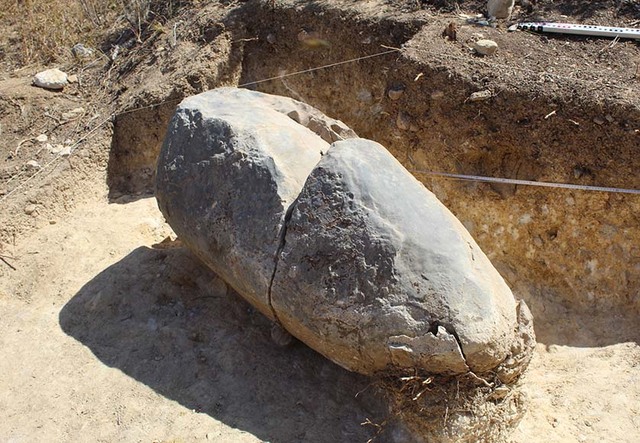
In addition to the menhir, archaeologists uncovered various fragments and features around the site. These include pieces of other potential menhirs and evidence of agricultural activity in the area, such as seeds and stone tools. The micro-toponymy of the region—names like Monte do Trigo (Wheat Hill) and Vale do Joio (Darnel Valley)—further supports the theory that the site was a center of agricultural and spiritual significance.
Challenges in Preservation
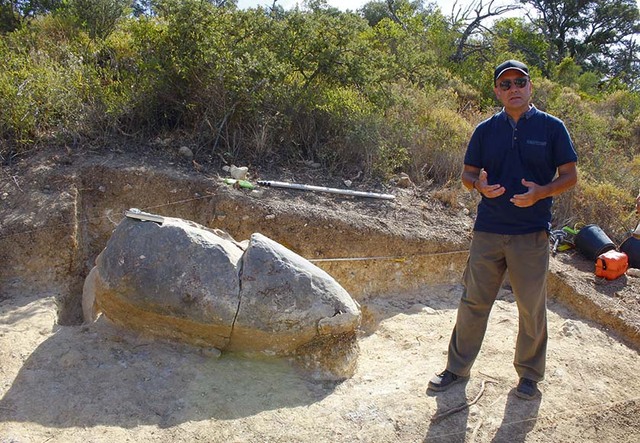
The menhir, while largely intact, has suffered from fragmentation, chipping, and cracks over the millennia. Its exposure to natural elements and human activity poses a risk of further degradation, prompting debates about its future.
Experts are considering two options for the menhir’s conservation. One proposal is to leave it in its original location, maintaining its historical context but risking further damage. The other is to move it to a protected environment, such as the Centro Explicativo da Calcinha, a local museum and tourist attraction. However, relocating the monument presents logistical challenges, given its size, weight, and the difficult terrain of its current location. Both options require careful consideration to balance historical integrity with the need for preservation.
Broader Implications
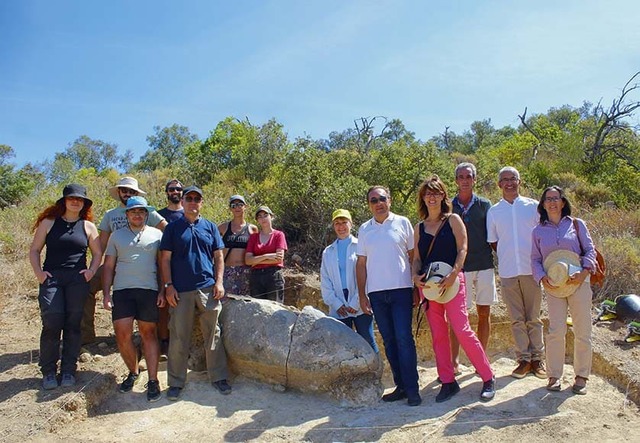
The São Brás menhir provides a rare glimpse into the lives of Neolithic communities in the eastern Algarve. It confirms the presence of early agricultural societies in the region, highlighting their reliance on seasonal cycles and their spiritual connection to the land. The monument also underscores the sophistication of Neolithic craftsmanship and their ability to shape and transport large stones for ceremonial purposes.
The discovery of the São Brás menhir has sparked renewed interest in the region’s archaeological potential. Local authorities and researchers hope to expand their studies to uncover more relics and gain a deeper understanding of the area’s prehistoric past. This could include identifying additional menhirs, cromlechs, or other ceremonial structures, offering a more comprehensive picture of Neolithic life in the Algarve.
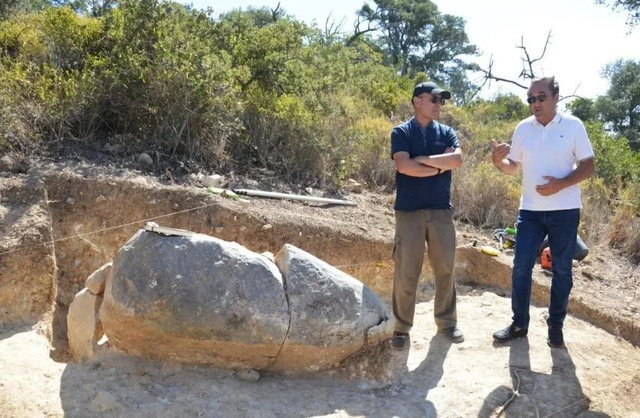
Community Involvement and Municipal Support
The discovery has also galvanized local efforts to preserve and promote the region’s heritage. Vítor Guerreiro, the mayor of São Brás de Alportel, has expressed strong support for the project, emphasizing the importance of understanding and celebrating the area’s history. The municipality has committed to working closely with archaeologists and cultural organizations to ensure that the menhir and its associated findings are preserved for future generations. This collaboration highlights the value of community involvement in archaeological research and heritage conservation.
Conclusion
The 5,500-year-old menhir of São Brás de Alportel is more than just a stone monument; it is a testament to the ingenuity, spirituality, and resilience of Neolithic communities. Its discovery has not only enriched our understanding of early human history in the Algarve but also underscored the importance of preserving such relics for future generations. As researchers continue to study this remarkable find, it serves as a powerful reminder of our shared past and the enduring connection between humanity and the land.
